Lisa Mintz, Urban Nature Advocate
Acrylic paint, oil pastel, paint pens, embroidery on unstretched raw canvas, upcycled fabric scraps, foraged wood
56” x 60”
From the “Voices for the Wild” series: Lisa Mintz is an environmentalist, fundraiser and community organizer, founder of Urbanature Education and member of Sauvons La Falaise. Here I have depicted her at sunset in the autumn with Chimney Swifts (the one of the far right, photo reference from John Owen, others are merged/imagined by me), a brown snake (endangered) and Fragrant Sumac (rare). The fox is based on a reference by the late Hal Winters. The chimney swifts are entirely embroidered and they took forever to do!


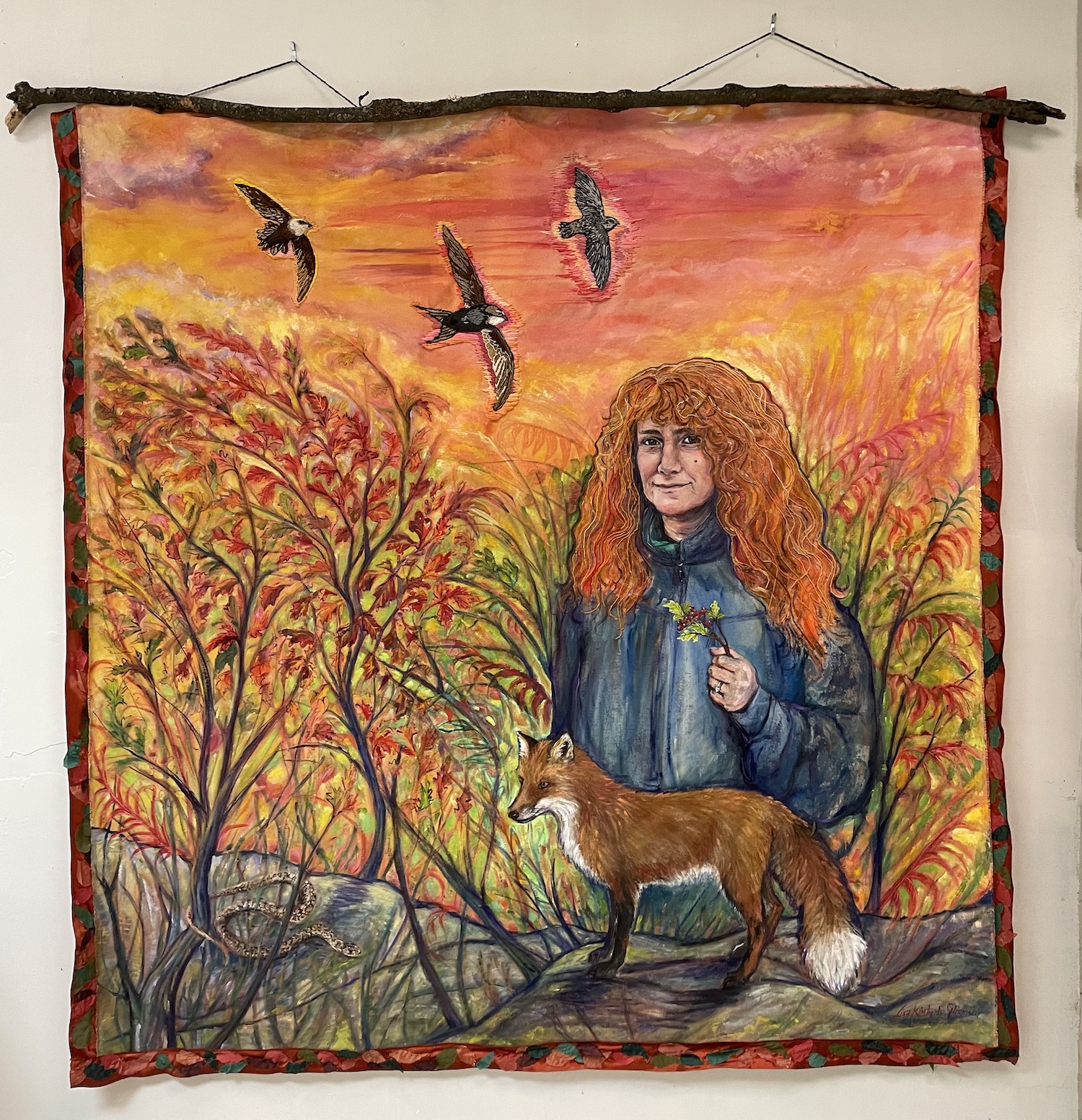
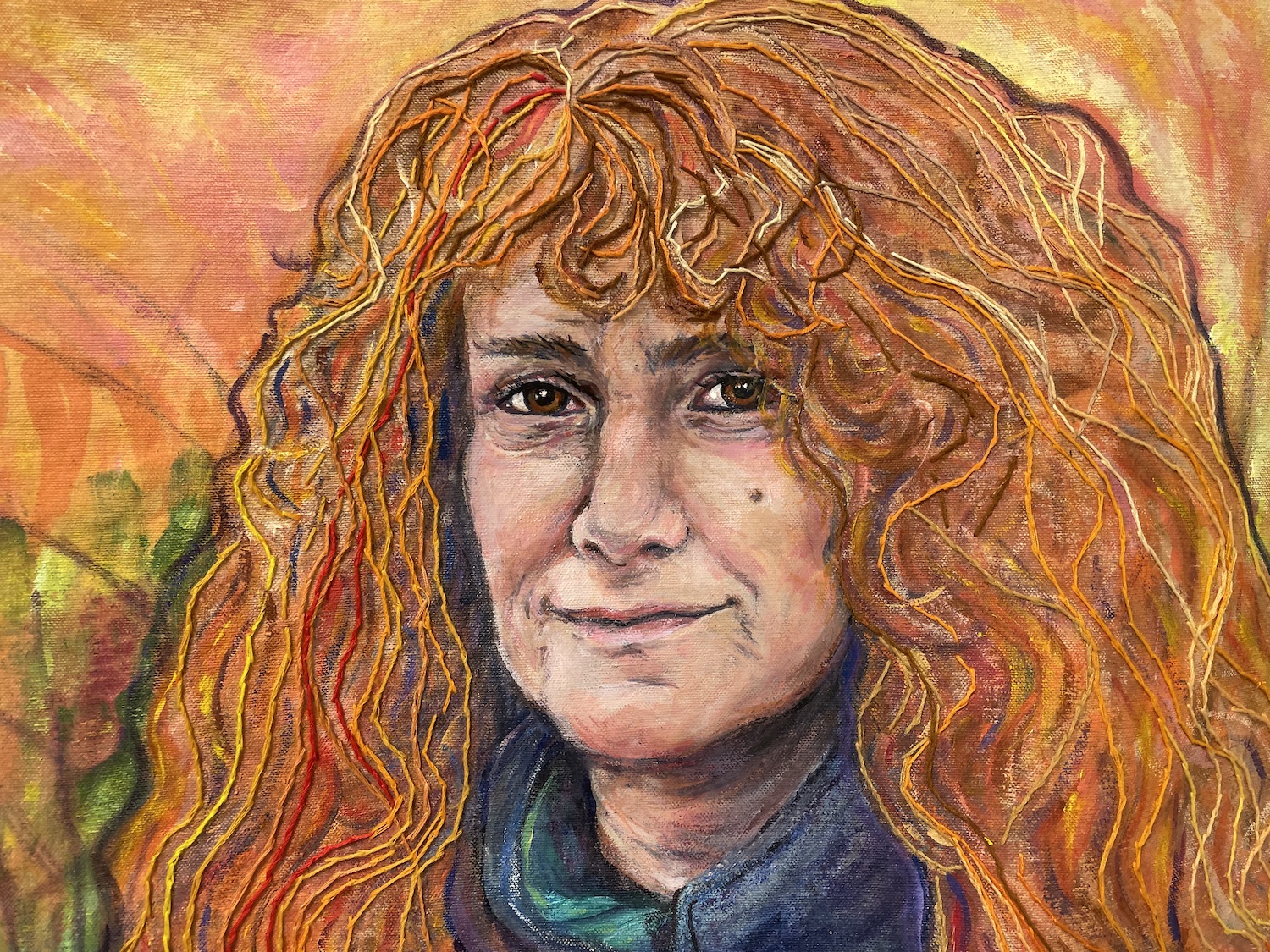
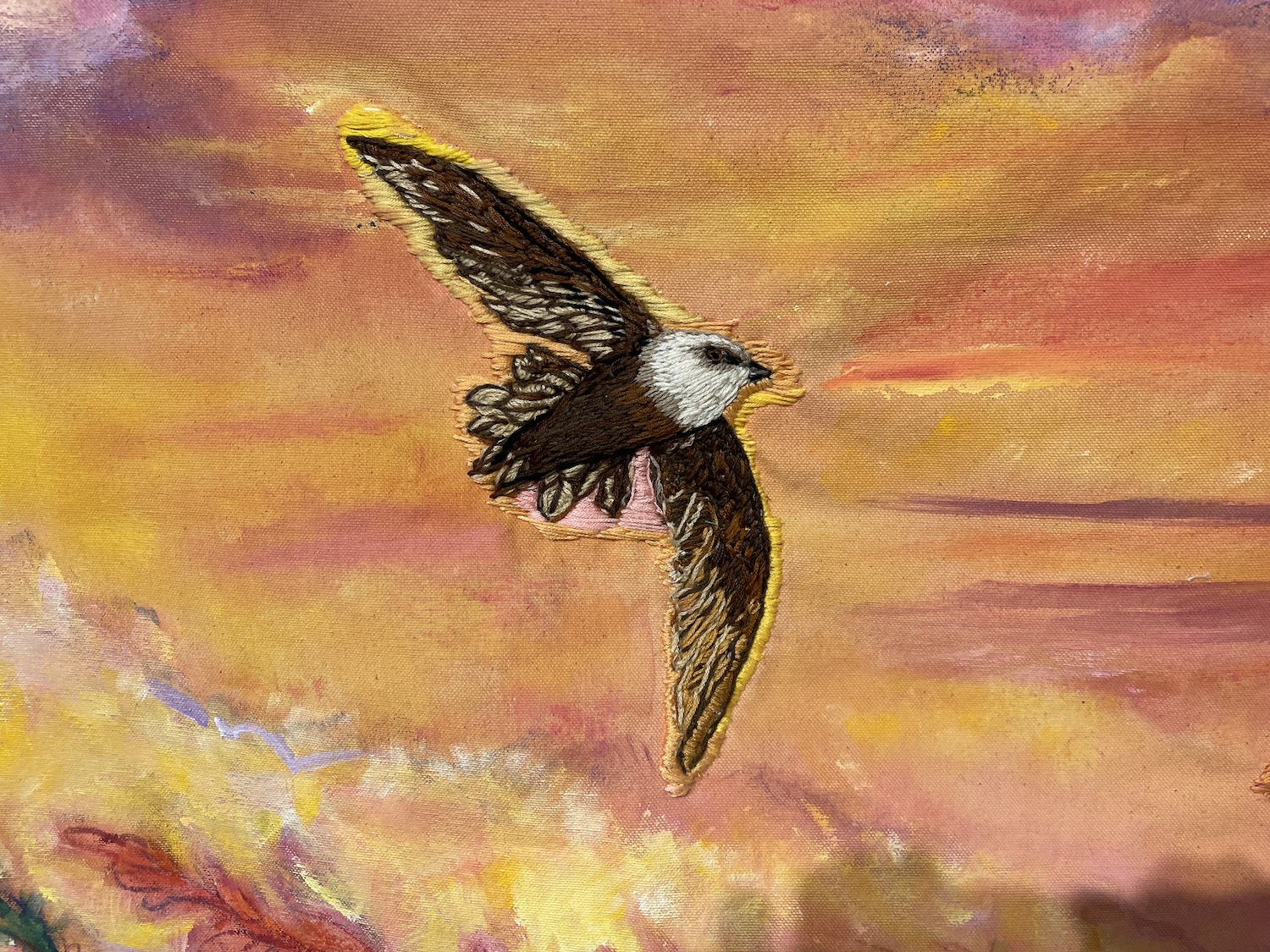
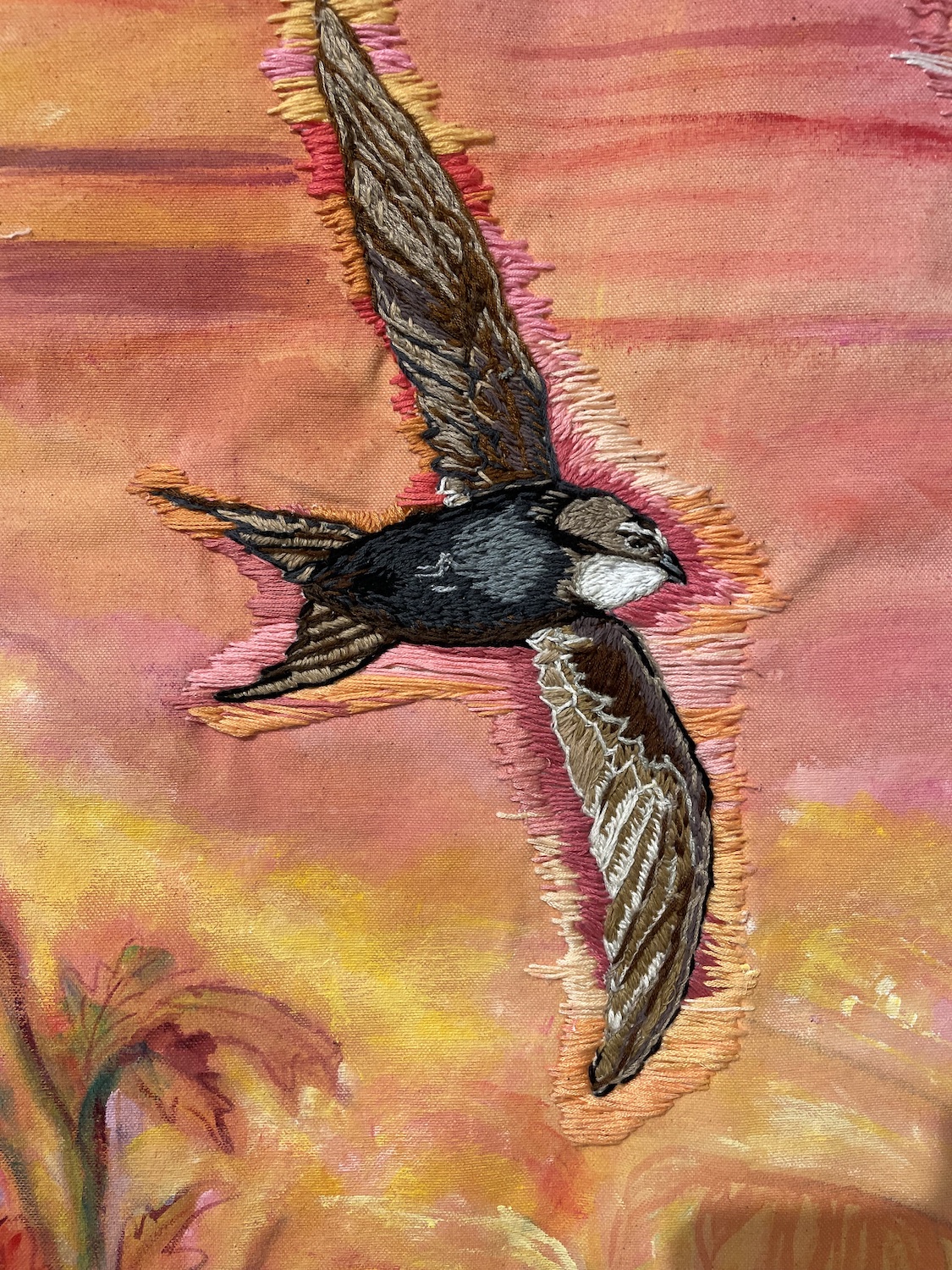
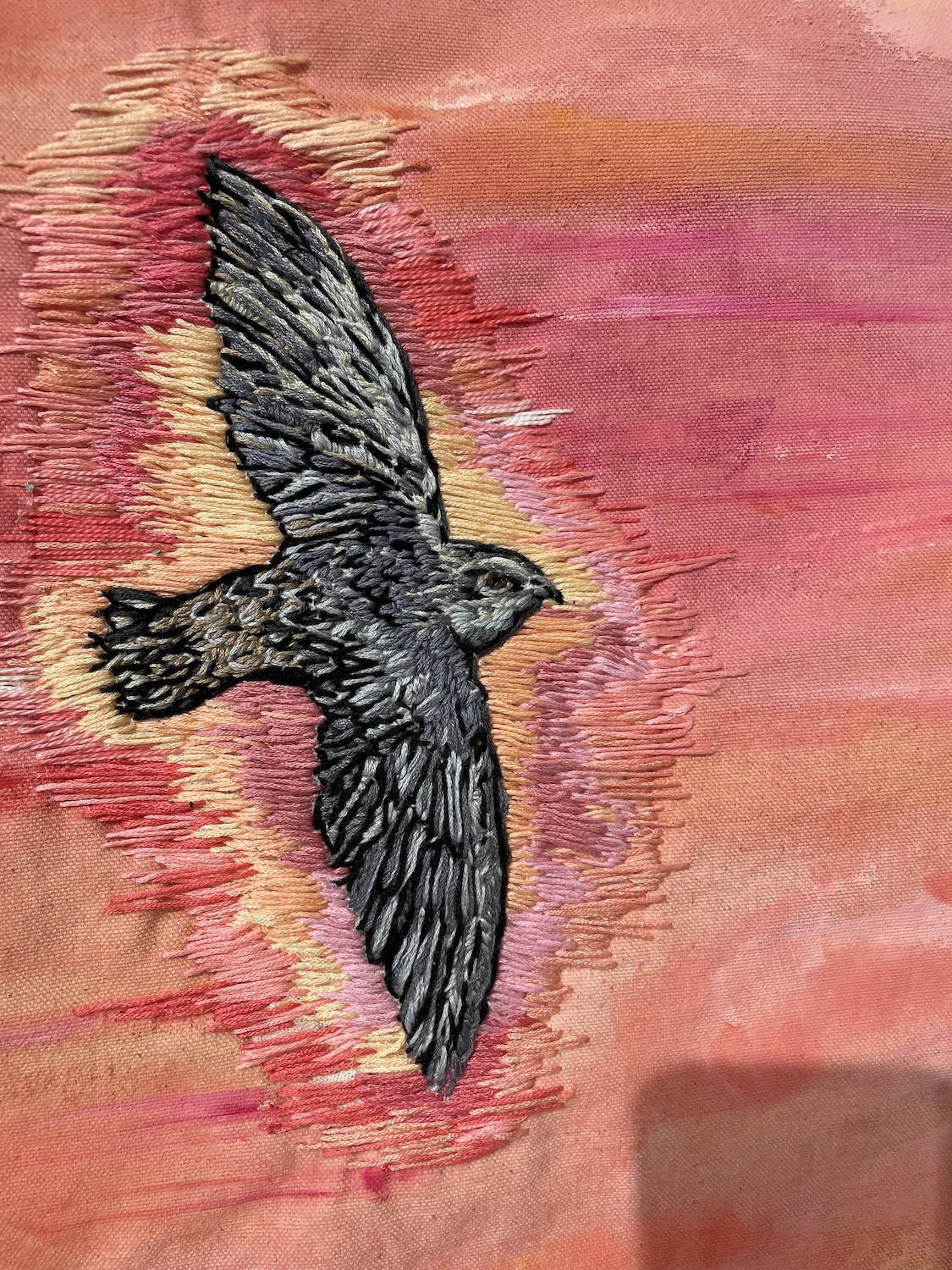
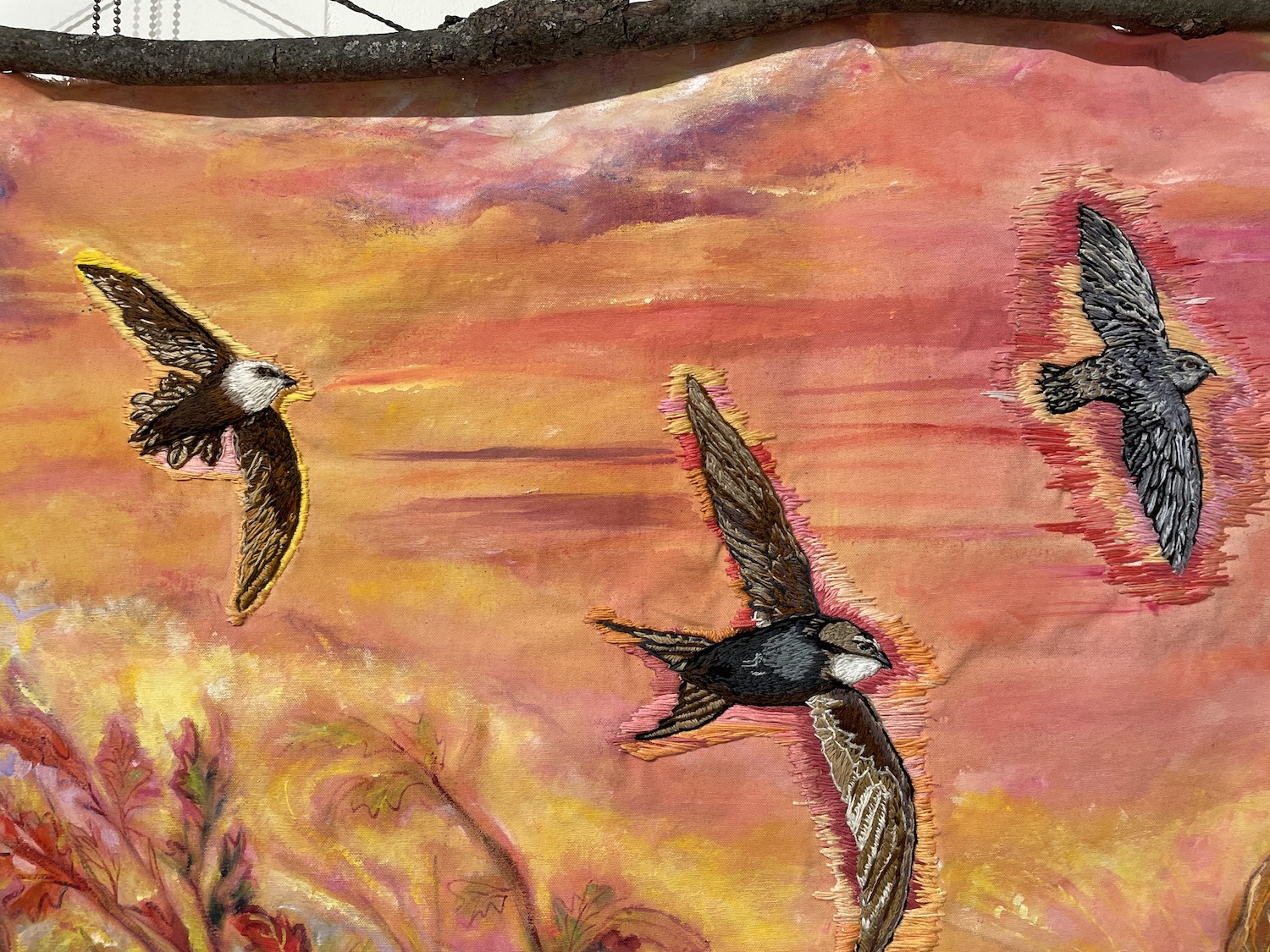
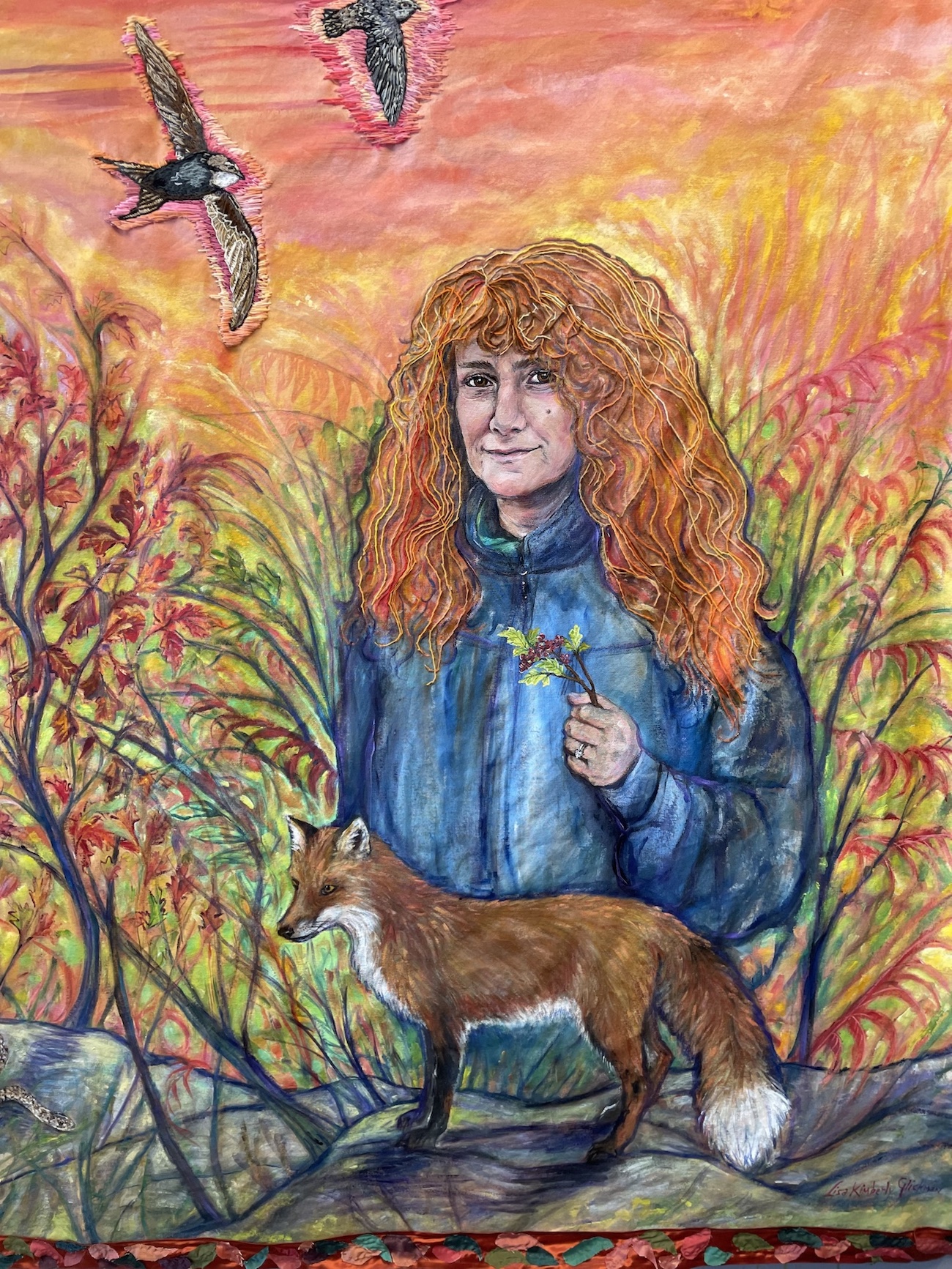
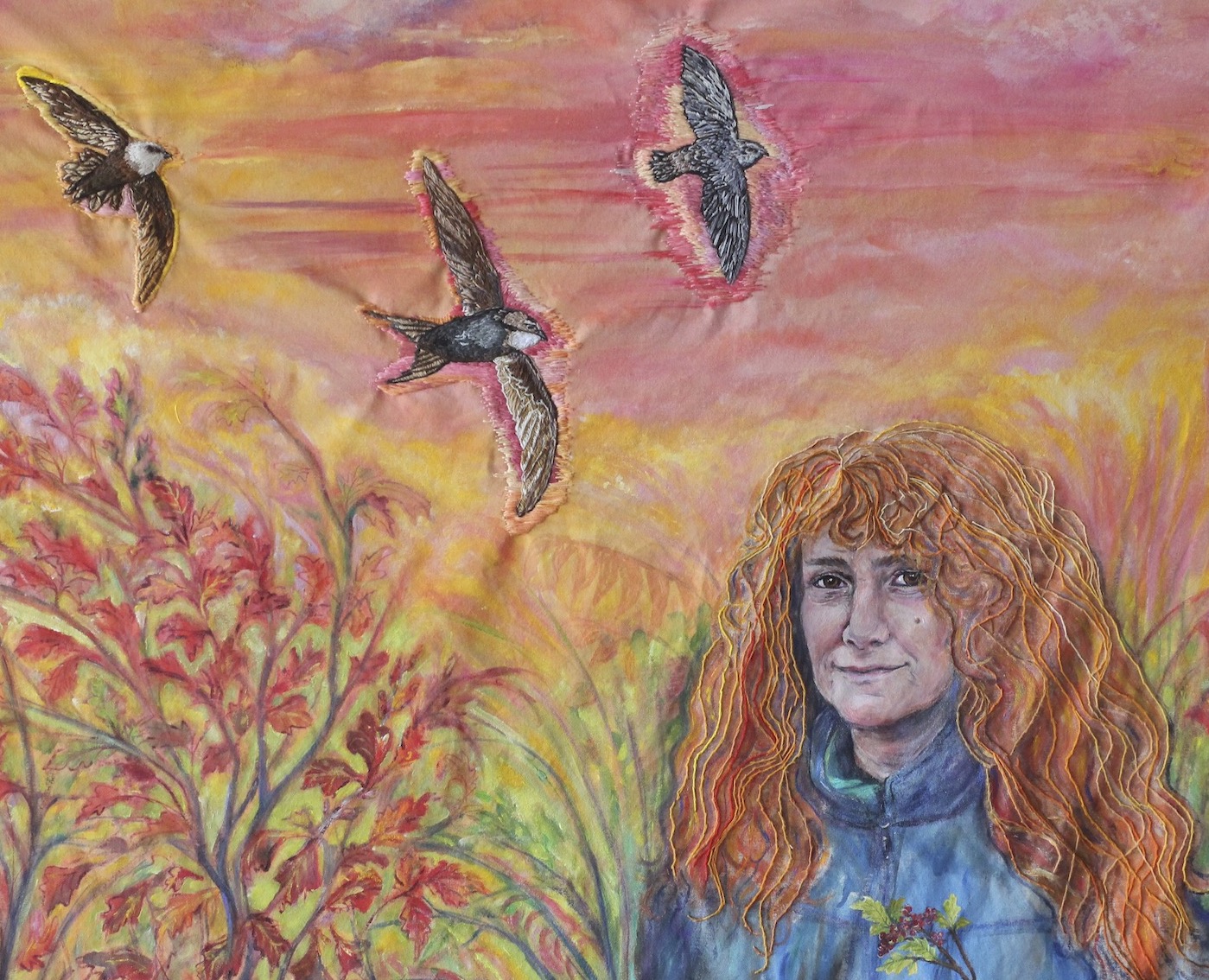
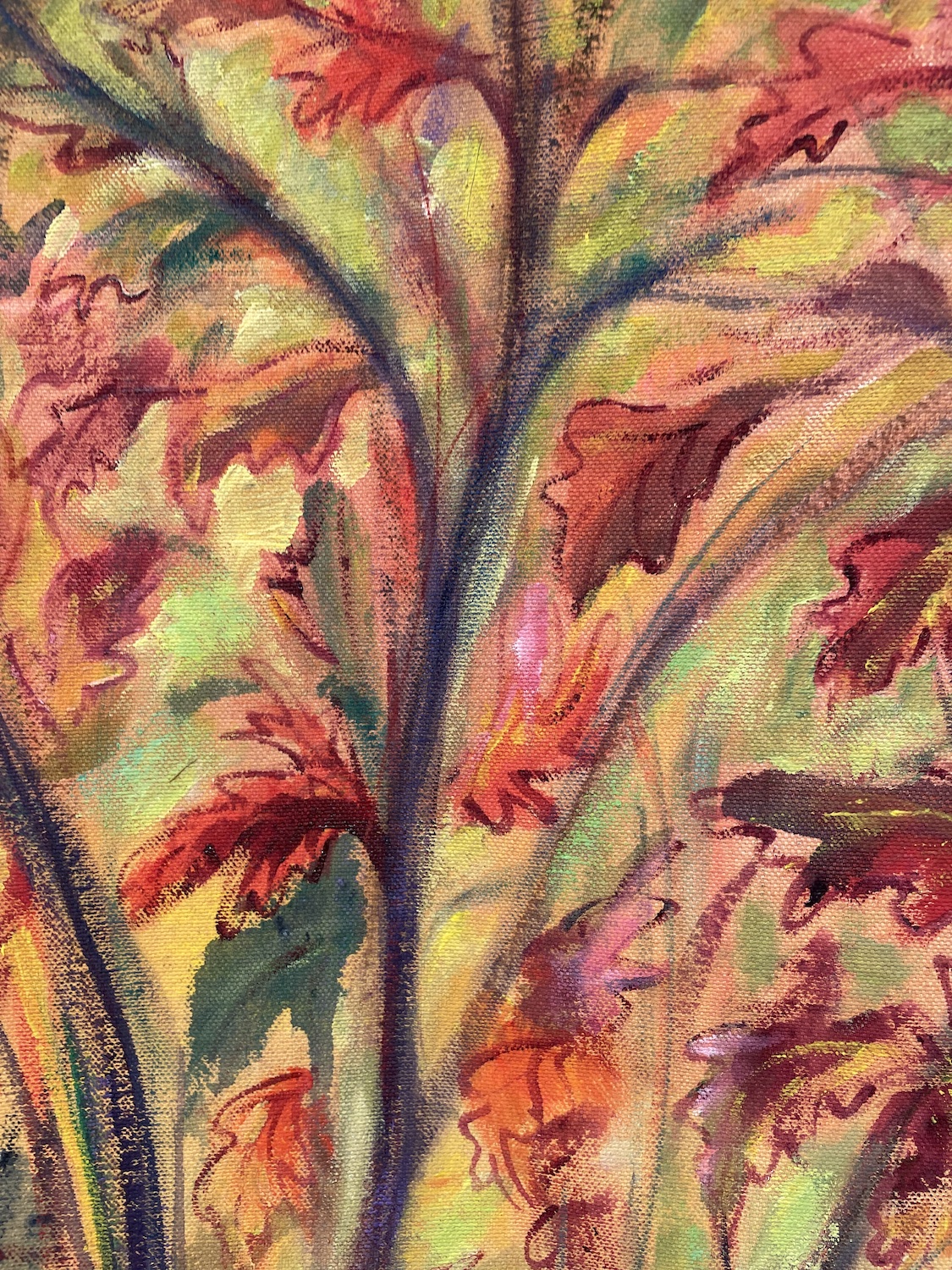
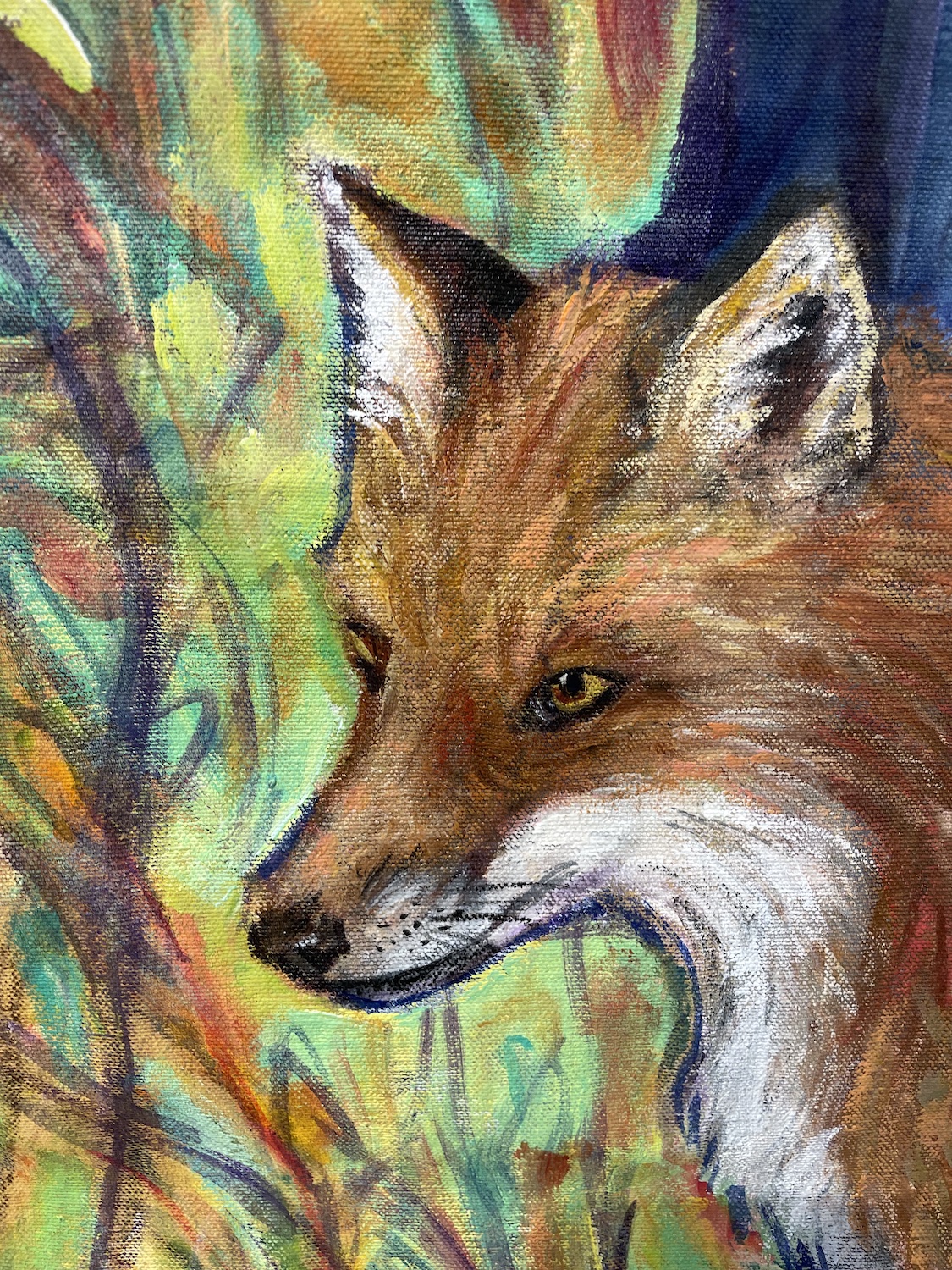
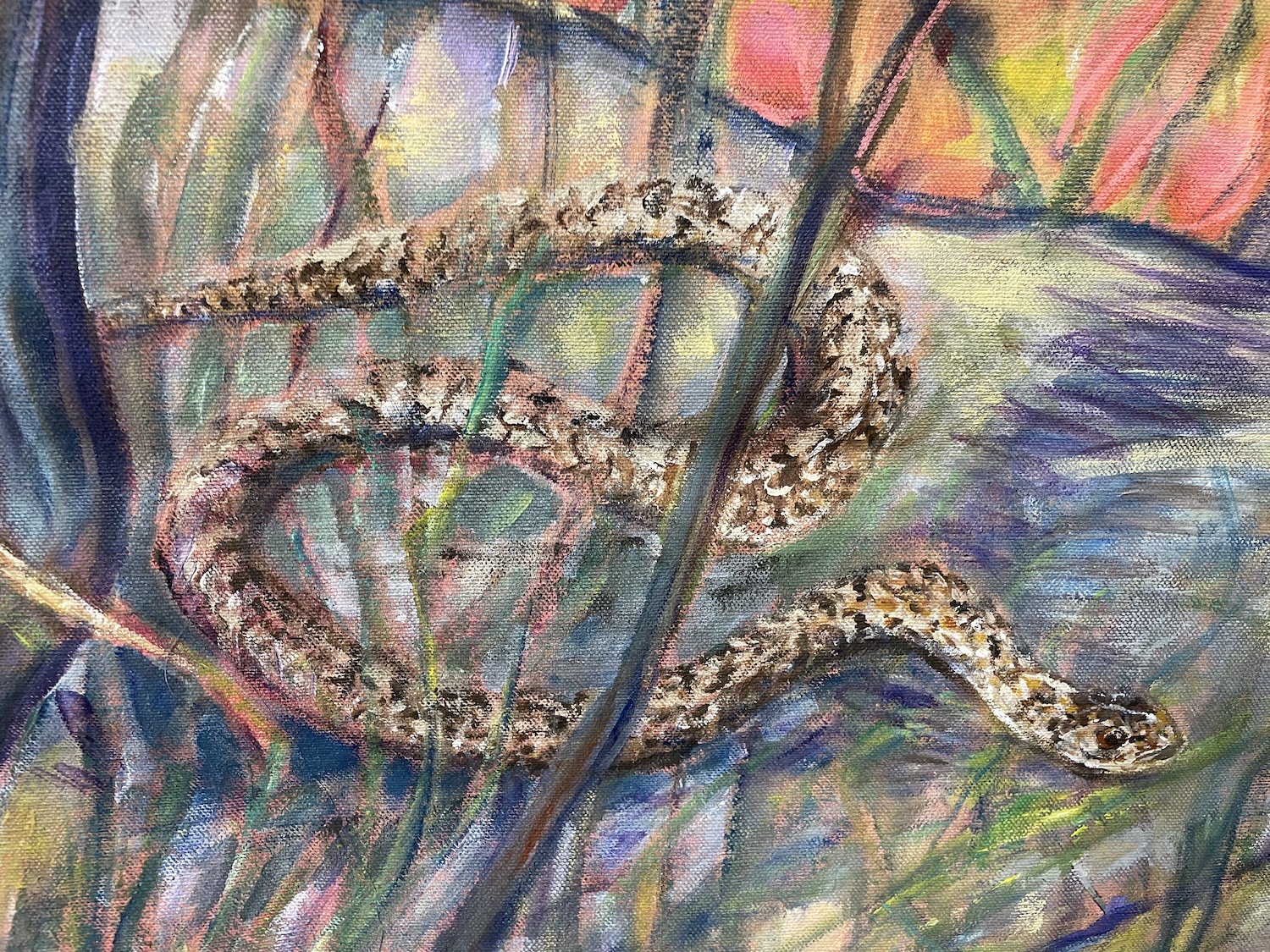
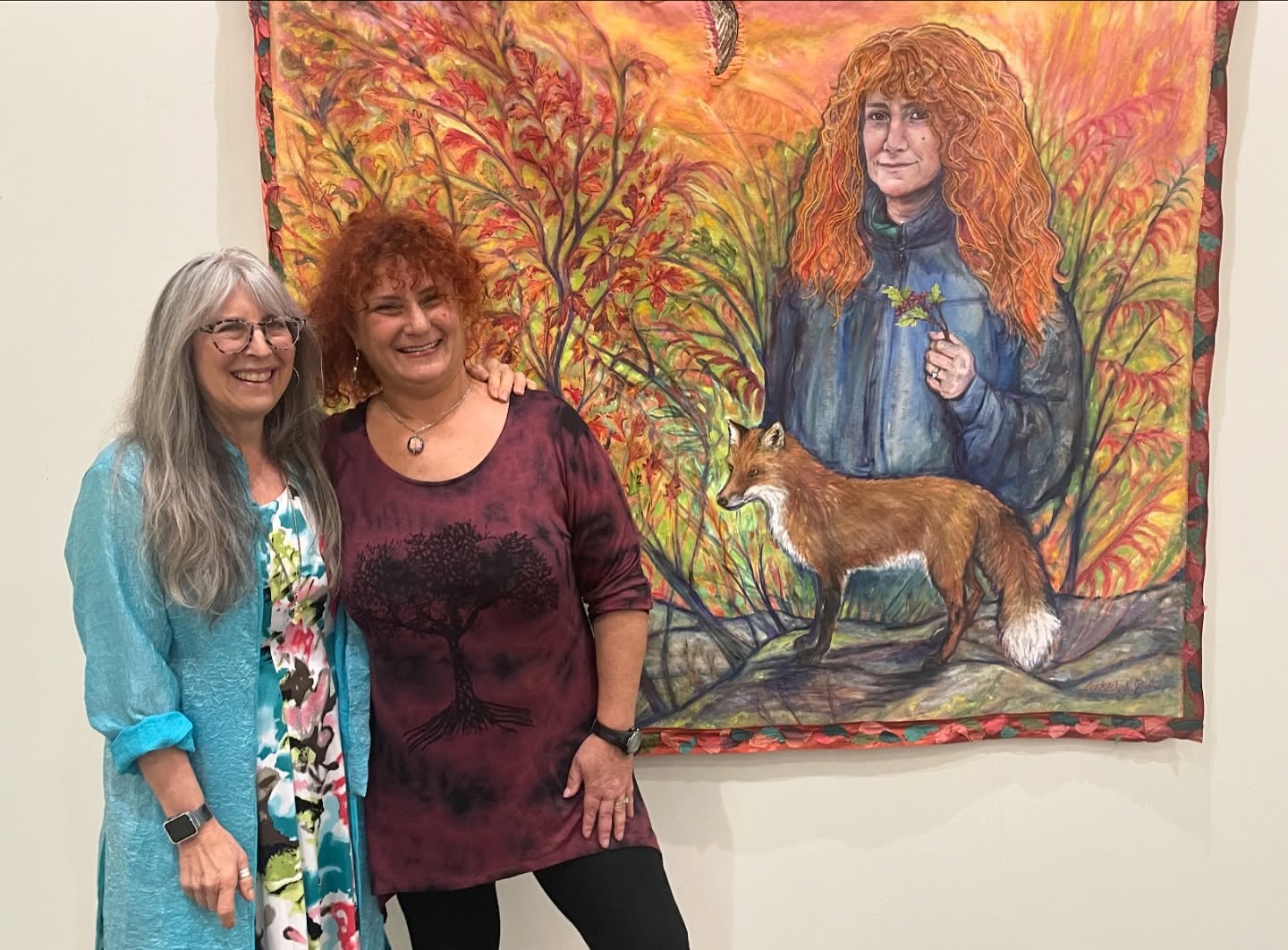
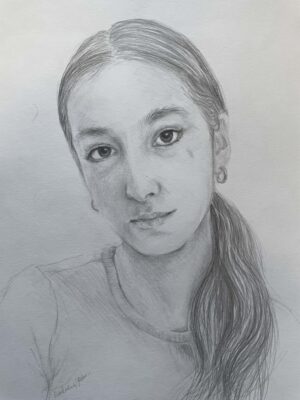
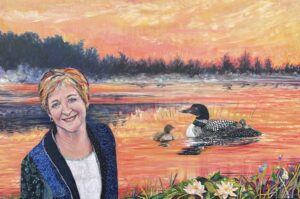
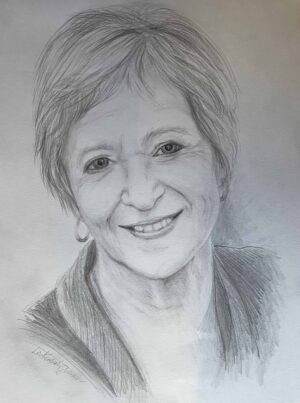
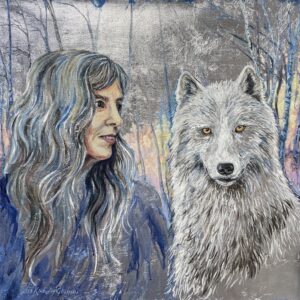

Reviews
There are no reviews yet.